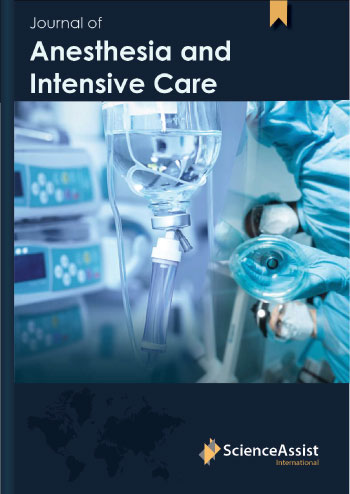
Volume 2, Issue 3 (2022)
1. Wailoo MP, Emery JL. Normal growth and development of the trachea. Thorax. 1982;37(8):584-587.
2. Taylor C, Subaiya L, Corsino D. Pediatric cuffed endotracheal tubes: an evolution of care. Ochsner J. Spring 2011;11(1):52- 56.
3. Davis D, Barbee L, Ririe D. Pediatric endotracheal tube selection: a comparison of age-based and height-based criteria. AANA J. 1998;66(3):299-303.
4. Gupta K, Gupta PK, Rastogi B, Krishan A, Jain M, Garg G. Assessment of the subglottic region by ultrasonography for estimation of appropriate size endotracheal tube: A clinical prospective study. Anesth Essays Res. 2012;6(2):157-160.
5. King BR, Baker MD, Braitman LE, Seidl-Friedman J, Schreiner MS. Endotracheal tube selection in children: a comparison of four methods. Ann Emerg Med. 1993;22(3):530-534.
6. Shih MH, Chung CY, Su BC, Hung CT, Wong SY, Wong TK. Accuracy of a new body length-based formula for predicting tracheal tube size in Chinese children. Chang Gung Med J. 2008;31(3):276-280.
7. Lakhal K, Delplace X, Cottier JP, Tranquart F, Sauvagnac X, Mercier C, et al. The feasibility of ultrasound to assess subglottic diameter. Anesth Analg. 2007;104(3):611-614.
8. Turkistani A, Abdullah KM, Delvi B, Al-Mazroua KA. The ‘best fit’ endotracheal tube in children --comparison of four formulae. Middle East J Anaesthesiol. 2009;20(3):383-387.
9. Schramm C, Knop J, Jensen K, Plaschke K. Role of ultrasound compared to age-related formulas for uncuffed endotracheal intubation in a pediatric population. Paediatr Anaesth. 2012;22(8):781-786.
Volume 2, Issue 3 (2021)
1. Wailoo MP, Emery JL. Normal growth and development of the trachea. Thorax. 1982;37(8):584-587.
2. Taylor C, Subaiya L, Corsino D. Pediatric cuffed endotracheal tubes: an evolution of care. Ochsner J. Spring 2011;11(1):52- 56.
3. Davis D, Barbee L, Ririe D. Pediatric endotracheal tube selection: a comparison of age-based and height-based criteria. AANA J. 1998;66(3):299-303.
4. Gupta K, Gupta PK, Rastogi B, Krishan A, Jain M, Garg G. Assessment of the subglottic region by ultrasonography for estimation of appropriate size endotracheal tube: A clinical prospective study. Anesth Essays Res. 2012;6(2):157-160.
5. King BR, Baker MD, Braitman LE, Seidl-Friedman J, Schreiner MS. Endotracheal tube selection in children: a comparison of four methods. Ann Emerg Med. 1993;22(3):530-534.
6. Shih MH, Chung CY, Su BC, Hung CT, Wong SY, Wong TK. Accuracy of a new body length-based formula for predicting tracheal tube size in Chinese children. Chang Gung Med J. 2008;31(3):276-280.
7. Lakhal K, Delplace X, Cottier JP, Tranquart F, Sauvagnac X, Mercier C, et al. The feasibility of ultrasound to assess subglottic diameter. Anesth Analg. 2007;104(3):611-614.
8. Turkistani A, Abdullah KM, Delvi B, Al-Mazroua KA. The ‘best fit’ endotracheal tube in children --comparison of four formulae. Middle East J Anaesthesiol. 2009;20(3):383-387.
9. Schramm C, Knop J, Jensen K, Plaschke K. Role of ultrasound compared to age-related formulas for uncuffed endotracheal intubation in a pediatric population. Paediatr Anaesth. 2012;22(8):781-786.
